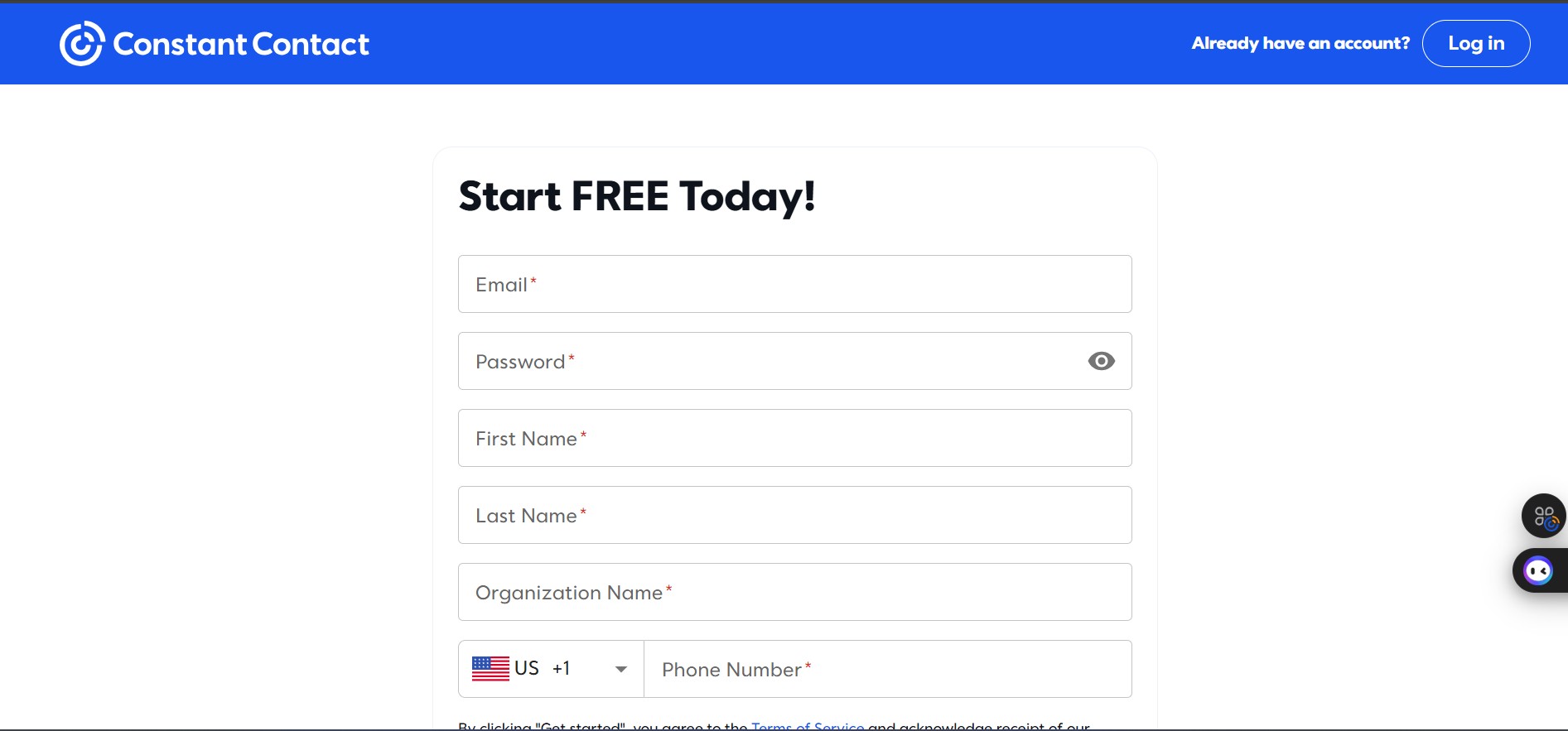- Introduction
- Overview of Constant Contact and Mailchimp
- Ease of Use
- Email Templates and Design Flexibility
- Marketing Automation Features
- List Management and Segmentation
- Analytics and Reporting
- Integrations and Compatibility
- Pricing Comparison
- Customer Support
- Pros and Cons of Each Platform
- Which Tool Is Best for You?
- Alternatives to Consider
- Conclusion
- FAQs
Introduction
When it comes to email marketing, two names often stand out: Constant Contact vs Mailchimp. Both platforms are powerful tools used by businesses of all sizes to connect with their audiences, nurture leads, and drive conversions. But which one is right for you?
Choosing between Constant Contact and Mailchimp can be overwhelming, especially if you’re just starting out or trying to scale your marketing efforts. While they both offer similar core features—such as email templates, automation, and reporting—they differ significantly in usability, pricing, integrations, and overall performance.
In this in-depth comparison, we’ll break down the key differences between Constant Contact and Mailchimp to help you make an informed decision. Whether you’re a small business owner, a digital marketer, or a content creator, this guide will point you to the right email marketing solution for your unique needs.
Overview of Constant Contact and Mailchimp
Before diving into the detailed comparison, it’s important to understand what each platform offers at a high level.
🟦 Constant Contact: A User-Friendly Email Marketing Platform
Constant Contact is known for its simplicity and ease of use, making it a favorite among small business owners and non-technical users. It offers essential email marketing features like customizable templates, contact list management, real-time reporting, and marketing automation.
In addition to email marketing, Constant Contact includes tools for:
- Social media posting and scheduling
- Event marketing
- Surveys and polls
- Basic eCommerce integrations
Its clean interface and guided setup make it especially appealing to beginners who want to launch campaigns quickly without a steep learning curve.
🟨 Mailchimp: A Robust, All-in-One Marketing Platform
Mailchimp started as a simple email marketing tool but has evolved into a full-fledged marketing platform. It offers advanced features like behavioral targeting, multivariate testing, advanced analytics, and content optimization.
Key features of Mailchimp include:
- Smart audience segmentation
- Advanced automation workflows
- Landing page and website builder
- Built-in CRM and eCommerce tools
Mailchimp’s strength lies in its scalability. It’s ideal for users who want more than just email marketing and are comfortable exploring deeper marketing functionalities.
Ease of Use
When comparing Constant Contact vs Mailchimp, one of the most important factors for beginners and small business owners is how easy the platform is to use. Let’s look at how each one performs when it comes to user experience.
🟦 Constant Contact: Designed for Simplicity
Constant Contact is often praised for its clean interface and beginner-friendly tools. From setting up your first campaign to tracking performance, the platform guides users through each step with helpful tips and intuitive design.
Key ease-of-use highlights:
- Drag-and-drop email editor
- Simple navigation menu
- Pre-designed templates with minimal customization required
- Easy list importing and contact management
This makes Constant Contact an excellent option for users who prefer a straightforward platform without too many bells and whistles.
🟨 Mailchimp: More Powerful, Slightly Steeper Learning Curve
Mailchimp offers a wider range of features, which can make the interface feel a bit overwhelming at first, especially for new users. However, it provides helpful onboarding checklists and an extensive knowledge base to ease the learning process.
Key ease-of-use highlights:
- Powerful but slightly complex automation builder
- More customization options for email and landing pages
- Dashboard is feature-rich but can feel cluttered
- Templates and campaigns are flexible but may require more setup time
Mailchimp is a better fit for marketers who are comfortable experimenting with advanced features or are looking for more growth flexibility.
Email Templates and Design Flexibility
The ability to create beautiful, engaging emails quickly is a big part of choosing the right email marketing platform. In this section, we’ll compare how Constant Contact vs Mailchimp stack up when it comes to email templates and customization.
🟦 Constant Contact: Clean Designs with Simplicity in Mind
Constant Contact offers over 100 pre-designed email templates, catering to various industries and campaign types. These templates are clean, mobile-friendly, and easy to customize using the platform’s drag-and-drop editor.
Key benefits:
- Simple template editor for quick customization
- Templates are categorized by goal (e.g., announcements, promotions, newsletters)
- Allows basic design tweaks like font, color, and layout changes
- Ideal for users who want a fast and easy setup
While it’s not the most flexible in terms of advanced design options, it’s perfect for users who prioritize speed and ease.
🟨 Mailchimp: Greater Creative Control
Mailchimp takes the lead when it comes to design flexibility. It offers a wide variety of modern templates and a powerful email editor that gives users more control over layout, branding, and customization.
Key benefits:
- Hundreds of professionally designed templates
- Advanced design options including custom HTML blocks
- Style manager for global design settings
- More freedom to tweak layouts, add media, and personalize content
Mailchimp is better suited for users who want more control over the look and feel of their emails — especially for branding-heavy campaigns.
Marketing Automation Features
Marketing automation is a powerful way to save time, nurture leads, and increase engagement through personalized email flows. Let’s see how Constant Contact vs Mailchimp compare in this critical category.
🟦 Constant Contact: Basic Yet Effective Automation
Constant Contact offers basic automation features that are easy to set up and perfect for small businesses or beginners. You can automate emails based on common triggers like sign-ups, birthdays, and clicks.
Key features:
- Welcome emails for new subscribers
- Birthday and anniversary messages
- Contact list segmentation-based automations
- Drip campaigns with a simple flow builder
While it doesn’t offer deep behavioral triggers or advanced conditions, Constant Contact covers the essential automations most small businesses need.
🟨 Mailchimp: Advanced, Customizable Workflows
Mailchimp shines in automation, offering a more sophisticated system with flexible options for behavior-based targeting and multi-step sequences.
Key features:
- Pre-built automation journeys and custom workflows
- Abandoned cart emails for eCommerce
- Behavioral triggers (e.g., opened/didn’t open, product views)
- Advanced conditional branching for decision-based campaigns
- Time delays and goal-based exits
Mailchimp is ideal for marketers looking for granular control and the ability to build complex automation funnels to scale their efforts.
List Management and Segmentation
Effective email marketing relies on targeting the right audience with the right message. That’s why list management and segmentation are essential features when comparing Constant Contact vs Mailchimp.
🟦 Constant Contact: Simple and Straightforward List Management
Constant Contact uses a list-based system, making it easy to group and organize contacts. You can import contacts from spreadsheets, CRMs, or manually add them.
Key features:
- Tagging and basic segmentation
- Ability to create multiple lists
- Easy import/export of contacts
- Manual or rule-based contact tagging
While Constant Contact keeps things simple, its segmentation tools may feel limiting for users who need highly dynamic, behavior-driven targeting.
🟨 Mailchimp: Advanced Segmentation and Smart Targeting
Mailchimp takes segmentation a step further with its audience-centric approach, allowing more flexibility and granularity.
Key features:
- Advanced segmentation based on behavior, demographics, and activity
- Tags, groups, and custom fields
- Predictive demographics (age, gender, etc.)
- Real-time filtering and dynamic content targeting
Mailchimp’s segmentation tools are ideal for businesses that want to tailor campaigns with precision and send hyper-personalized content to different audience segments
Analytics and Reporting
Understanding how your campaigns perform is key to improving future email marketing efforts. In this section, we compare the analytics and reporting capabilities of Constant Contact vs Mailchimp.
🟦 Constant Contact: Clear and Easy-to-Understand Reports
Constant Contact provides basic but insightful analytics, ideal for beginners and small business owners. The platform focuses on the essentials, offering visual dashboards that are easy to read.
Key reporting features:
- Open and click-through rates
- Bounce and unsubscribe rates
- Device and location tracking
- Heatmaps to see where users clicked
While it lacks some advanced metrics, Constant Contact delivers just enough data for users to track progress and make simple improvements.
🟨 Mailchimp: Detailed, Data-Rich Reporting
Mailchimp offers a more comprehensive analytics suite, with powerful tools for those who want to dig deep into performance metrics.
Key reporting features:
- Comparative reports across campaigns
- Advanced A/B testing results
- Ecommerce tracking (revenue per campaign, cart recovery)
- Real-time campaign analytics and benchmarks
- Predictive analytics for future performance
Mailchimp is the better choice for data-driven marketers who want to track every detail and optimize campaigns based on real insights.
Integrations and Compatibility
When choosing between Constant Contact vs Mailchimp, it’s essential to consider how well each platform integrates with the tools you already use. Whether it’s your website, CRM, or eCommerce store, seamless integration can significantly enhance your marketing efforts.
🟦 Constant Contact: Focused but Limited Integration Options
Constant Contact supports a decent number of integrations, especially for small businesses using common tools. It connects easily with website builders like WordPress, Shopify, and Wix.
Popular integrations include:
- Shopify, WooCommerce, Etsy
- WordPress and Wix
- Facebook and Instagram Ads
- Eventbrite, QuickBooks, and Canva
However, compared to Mailchimp, the number of available integrations is smaller, and the functionality can be somewhat basic.
🟨 Mailchimp: Extensive Integration Ecosystem
Mailchimp excels in this category, offering hundreds of integrations with apps across eCommerce, CRM, social media, analytics, and more.
Popular integrations include:
- Shopify, WooCommerce, Magento
- Salesforce, HubSpot, and Zoho CRM
- Stripe, PayPal, and Square
- Facebook, Instagram, Google Ads
- Zapier for automating workflows
Mailchimp is more suitable for users who rely on a variety of tools and need flexible, robust integration options.
Pricing and Value for Money
Budget is a crucial factor when choosing between Constant Contact vs Mailchimp, especially for startups and small businesses. Let’s break down their pricing plans and what you get at each level.
🟦 Constant Contact: Simple, Transparent Pricing

Constant Contact offers two main plans—Email and Email Plus—with pricing based primarily on the number of contacts.
- Email Plan: Starts at around $12/month for up to 500 contacts
- Email Plus Plan: Starts at around $45/month for up to 500 contacts, including advanced features like automation, surveys, and event marketing
Constant Contact’s pricing is straightforward, but costs can rise quickly as your list grows. The platform does not offer a free plan but provides a 60-day free trial.
🟨 Mailchimp: Flexible Pricing with a Free Tier
Mailchimp offers a more flexible pricing structure, including a free plan that allows up to 500 contacts and 1,000 sends per month, which is ideal for beginners.

- Free Plan: Basic features, up to 500 contacts
- Essentials Plan: Starts at $13/month, with more templates and support
- Standard Plan: Starts at $20/month, adds advanced automations and audience insights
- Premium Plan: Starts at $350/month for large audiences and advanced analytics
Mailchimp’s tiered pricing allows users to scale and access more powerful features as needed, but higher tiers can be pricey.
Customer Support
Reliable customer support is essential when using any email marketing tool. Let’s see how Constant Contact vs Mailchimp handle customer service.
🟦 Constant Contact: Strong Support for Small Businesses
Constant Contact offers phone support, live chat, and email support, making it easy for users to get help quickly. They also provide a large knowledge base, webinars, and community forums.
Key highlights:
- 7 days a week phone support
- Live chat during business hours
- Extensive library of tutorials and guides
- Onboarding webinars and personalized coaching (with paid plans)
This makes Constant Contact a great choice for users who want accessible and hands-on support.
🟨 Mailchimp: Mostly Self-Service with Limited Live Support
Mailchimp provides email and chat support depending on your plan. Phone support is only available for premium customers. They have a comprehensive knowledge base and community forums.
Key highlights:
- Email support for all plans
- Chat support for paid plans
- Phone support only for Premium plan users
- Vast resources and tutorials online
While Mailchimp’s self-service resources are excellent, some users may miss having more direct support options, especially on lower-tier plans.
Pros and Cons
To help you make an informed decision, here’s a clear summary of the advantages and disadvantages of both platforms in the Constant Contact vs Mailchimp comparison.
🟦 Constant Contact Pros
- Very user-friendly, ideal for beginners
- Strong phone and live chat support
- Simple and straightforward pricing
- Good basic automation and list management
- Event marketing and social media integration
🟦 Constant Contact Cons
- Limited advanced automation features
- Fewer integrations compared to Mailchimp
- No free plan available
- Design flexibility is basic
🟨 Mailchimp Pros
- Robust marketing automation and segmentation
- Extensive integrations and ecommerce tools
- Free plan available for small lists
- Powerful analytics and reporting
- Highly customizable email design options
🟨 Mailchimp Cons
- Steeper learning curve for beginners
- Phone support only for premium plans
- Pricing can get expensive as contacts grow
- Interface can feel cluttered due to many features
Alternatives to Constant Contact and Mailchimp
While Constant Contact vs Mailchimp are two of the most popular email marketing tools, there are other great options that might fit your needs better depending on your business goals and budget.
1. Sendinblue
A versatile platform that combines email marketing with SMS campaigns. It’s known for its affordable pricing and easy-to-use automation features, making it a strong alternative for small to medium businesses.
2. ConvertKit
Designed specifically for creators and bloggers, ConvertKit offers simple automation and tagging features. It’s ideal if your focus is on building a community and selling digital products.
3. GetResponse
A comprehensive marketing tool that includes email marketing, automation, landing pages, and webinars. It’s suitable for businesses looking for an all-in-one solution.
4. ActiveCampaign
Offers advanced marketing automation and CRM features. It’s perfect for businesses that want deep personalization and sales automation alongside their email marketing.
5. MailerLite
Known for its simplicity and affordability, MailerLite offers essential email marketing features and a drag-and-drop editor. It’s a good choice for startups and beginners on a budget.
Conclusion
Choosing the right email marketing tool depends on your specific needs, budget, and technical comfort. In the Constant Contact vs Mailchimp comparison, both platforms have clear strengths and weaknesses.
Constant Contact is the best choice for beginners and small businesses that want a simple, easy-to-use tool with solid customer support and straightforward pricing. It’s ideal if you prefer a hassle-free experience and don’t need highly advanced automation or integrations.
On the other hand, Mailchimp stands out for users who want more flexibility, advanced automation, deeper audience segmentation, and extensive integrations. Its free tier is great for beginners, but the learning curve is steeper, and pricing can become costly as your subscriber list grows.
Ultimately, if you’re a creator or small business owner looking for ease and support, Constant Contact might be your best bet. If you’re a data-driven marketer or growing business wanting powerful features and scalability, Mailchimp is likely the better fit.




